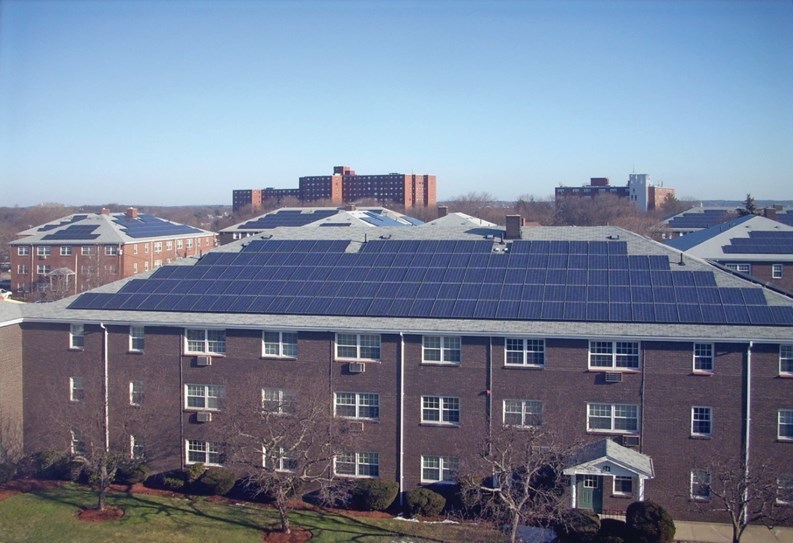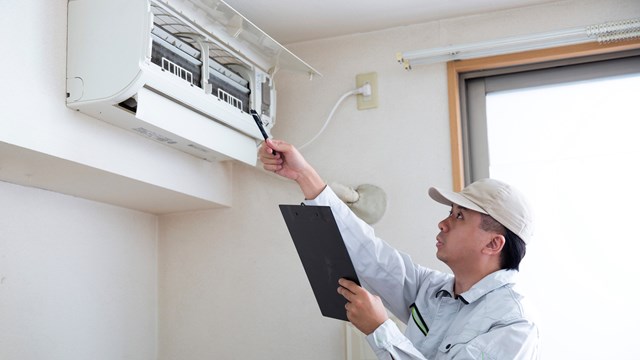Mom was right.
Her admonition to “turn out the lights when you leave the room” is as valid today as it was a generation ago. And yet many condominiums today, while energy-conscious in so many ways, seem to feel it’s better to just leave the lights on – sometimes, 24/7.
Why? Well, the argument goes, it takes more energy, or produces more wear and tear, to start them up again than it does to leave them burning.
“It’s a popular myth that turning bulbs on and off will make them die faster,” says Nancy Hazard of Greenfield, Massachusetts, former director of the Northeast Sustainable Energy Association and a volunteer with Greening Greenfield.
The roots of that myth may well be traced to earlier days of the computer age, when experts opined that it was better to leave a computer running than to power it on and off –moves that, if nothing else, put a strain on the system’s mechanical components.
Today, computers tend to drop into an energy-saving “sleep” mode when not in active use, as do a host of other electrical and electronic devices found in the average building.
Unfortunately, the advent of new energy-saving products has compounded some of the misguided ideas: Because the new compact fluorescent bulbs installed in a community use much less energy than the old incandescent bulbs, it’s okay to leave them on longer. You’re still saving energy, right?
“Maybe you should be thinking about what lights you really need,” Hazard says. “Do you just need a little light to get your keys out of your pocket and into the keyhole? Or do you need enough light for a party on the patio?” When swapping out bulbs, she suggests, homeowners and board members should think beyond “replacement” and really assess their needs. There’s a whole new generation of products out there, and thinking hasn’talways kept pace with innovation.
So it’s not surprising that when talk turns to energy conservation and “goinggreen,” myths of all stripes abound.
“We Can’t Do It”
“I think the biggest myth is thinking that because you live in a condo or other multi-family building, energy upgrades are difficult, if not impossible, to do,” says Gaelan Brown, vice president of GroSolar, a Vermont distributor and installer of solar energy solutions. “There are plenty of things that condos and condo owners can do,” he says.
Multi-family complexes – large apartment buildings –are getting on board with solar because it makes financial sense, according to Kurt Shillington, operations manager for Princeton Properties in Lowell, Massachusetts. Green incentives, including rebates from utility companies, are making the move almost a no-brainer. In February, the switch went on for a $2 million solar installation at an apartment complex the company manages in Salem, Massa-chusetts. With 16 roofs involved, the installation took a little over two months, but was worth the effort.
“The solar panels in Salem are successfully generating enough energy to take care of our common area electric needs an annual savings of $73,000 on our site’s electric bill,” says Sarah Greenough, Princeton’s vice president of corporate sales and media.
The solar panels power common areas, including lounges, outside lighting, and laundry facilities. Princeton Properties has another two solar projects already in the works, and the over-abundance of electricity being producedin Salem is actually helping to reduce the company’s costs at other sites it manages, Greenough notes.
Getting to yes is definitely possible, even if a little challenging. “Whether it is an apartment community or a large-scale condominium project, they face similar issues and concerns,” Greenough says. “Our management concerns and options are similar from site to site regardless of the type of multifamily property.“
The payback may not be quite as attractive for a condominium due to different financial and tax ramifications than those applying to a rental property, Shillington acknowledges. But that doesn’t mean “going green” is impossible; the payback just might not be as speedy.
Shillington recommends that any property considering a major energy project work with a knowledgeable and experienced consultant.
And “every project requires at least one person who really has the motivation to see it through – in some cases, relentlessly carrying it through,” Brownadds.
“Time and time again, we see that people who can afford to make the investment up front see a tremendous return on that investment,” Hazard notes. “Energy costs have come down from the highs of a couple of years ago, but you can bet they’ll spike again. It’s a good time to be prepared.”
A corollary of the “we can’t afford it” myth is the misconception that in general, major “green” steps don’t make sense financially. “Years ago, installing a (solar) electric system didn’t make sense; it would take 35 years just to break even,” Brown says. “But prices have come down dramatically, and there are government and utility company incentives out there. It’s no longer a question of whether it’s a good investment. And for those who think solar power doesn’t make sense in the North-east, Brown notes that New England only averages about 15 percent less sunlight than the Southwest.
“Germany is the global leader in how much power is produced by solar... and no place in Germany gets as much sun as Vermont does,” he notes.
“We’ve Done All We Can Do”
Condos built in the past couple of decades may well have insulated walls and double-pane windows, and over the past 20 years, many homeowners and associations took conservation-oriented steps.
“Most homes, unless they were built very recently, have cracks and crevices that add up to the size of a 3’-x-5’ window,” Hazard says. “Think about it: Would you, in the middle of winter, leave a window open?”
Fiberglass insulation, long considered the gold standard for attics and walls, has been upstaged lately by dense-pack cellulose insulation. “Fiberglass is used in furnace filters –because air goes through it. The same can happen in your walls and attic,” she says. And the six inches of insulation that was often the norm in new construction, is woefully inadequate if your goal is to “green up” your home. “You could add another 10 or 12 inches,” and go a long way toward cutting energy costs, she says.
“Most people could easily double the insulation in their attics,” Brown agrees. That’s as true for the multi-family building as it is for the single-family home, he notes.
Tightening up the building envelope is a low-cost, but effective, means of saving energy – and one that many homeowners and condo boards ignore. “People have heard that your home can be too tight and it’s not good,” Hazardsays, “but unless you have a very new, super-insulated home, it probably is not tight at all.”
An easy way to put the myth of a condo unit or building being up to snuff, conservation-wise, is to bring in a certified energy auditor – one who arrives with a thermal imaging gun and a blower door. The uninsulated and air-leaking spots will be immediately obvious. “The science has improved astronomically in the last 30 years,” Hazard notes. Using the audit report as a guide, get out the caulk gun or hire acontractor to tighten up the envelope.
“Then,” she suggests, “when it’s time to replace the siding, it might be a goodidea to add insulation” if the audit reveals that there’s a need.
“Our New Appliances Make us Green”
As homeowners and associations have upgraded appliances and other electronics over the years, they’ve ditched energy hogs and may feel oh, so very green.
But beware. Chances are that when you shut off your old television set, it actually went off –but with newer products, that isn’t necessarily so.
“The ‘phantom load’ is a big issue,” Brown says. “A lot of products today go into ‘ready mode’ and trickle juice even when you don’t need it.” One way to discover the drain your appliances and electronics – even brand-new ones – create is with a device called a “Kill-a-Watt.” Costing under $20, the devices can even be borrowed from some town libraries, he notes. Plug the device into an outlet, plug your appliance into it, and leave it in sleep mode for a whole day. “You may be surprised how muchjuice it’s using when it’s turned off,” Brown says.
The answer: Power strips. “Power strips can cut your electric bill by $6 to $10 a month,” he says. In addition to distributing and installing systems, GroSolar does frequent seminars on energy issues, and Brown says people are often surprised at the amount of ‘phantom load’ generated by products they thought were “energy efficient.”
Hazard adds that when buying new appliances – particularly big items like refrigerators – people look to the yellow energy use labels for guidance, thinking that by going with the lower energy use is automatically a “green” move. “But you have to remember that thoseyellow labels only compare the item you’re looking at to another appliance that is the same size,” she says.
“Maybe what you ought to be considering is whether you really needa refrigerator or freezer that size.”
Think you – and your community association – have really “gone green?” Take a look at The Wisdom Way Solar Village, a new community of 20 “nearzero net energy” homes in Greenfield, Massachusetts that produce nearly as much energy as they use. Built by Rural Development Inc., these affordable homes use between 82% and 92% less energy than a standard code built home, thanks to the installation of solar electric and solar hot water systems, tight building envelope, energy-efficient appliances and other “green” features.
Forget the myths, the experts suggest. Take a hard look at your habits, do some research, and see how much greener your home can be.
Pat Gale is the associate editor of New England Condominium magazine.







Leave a Comment